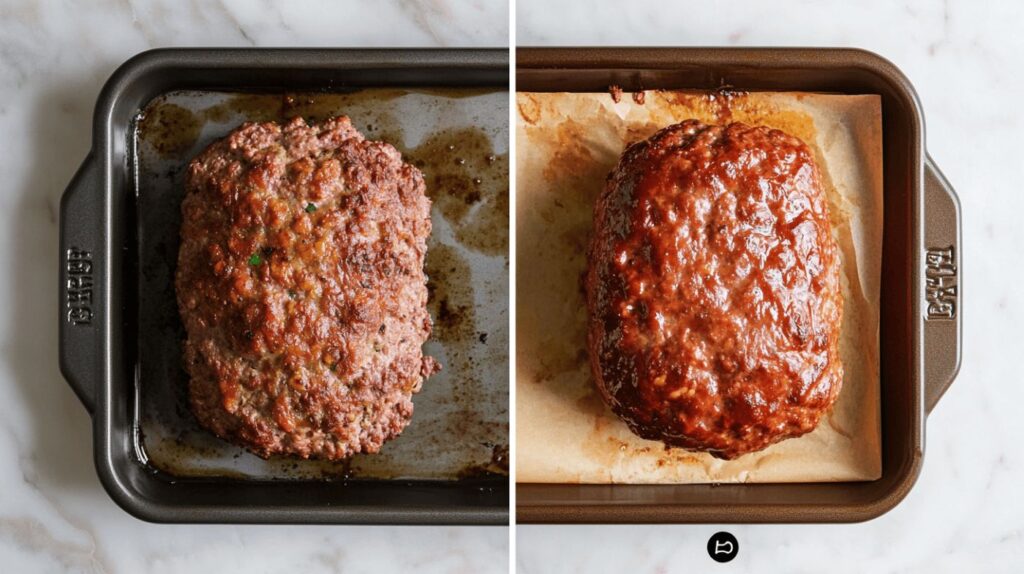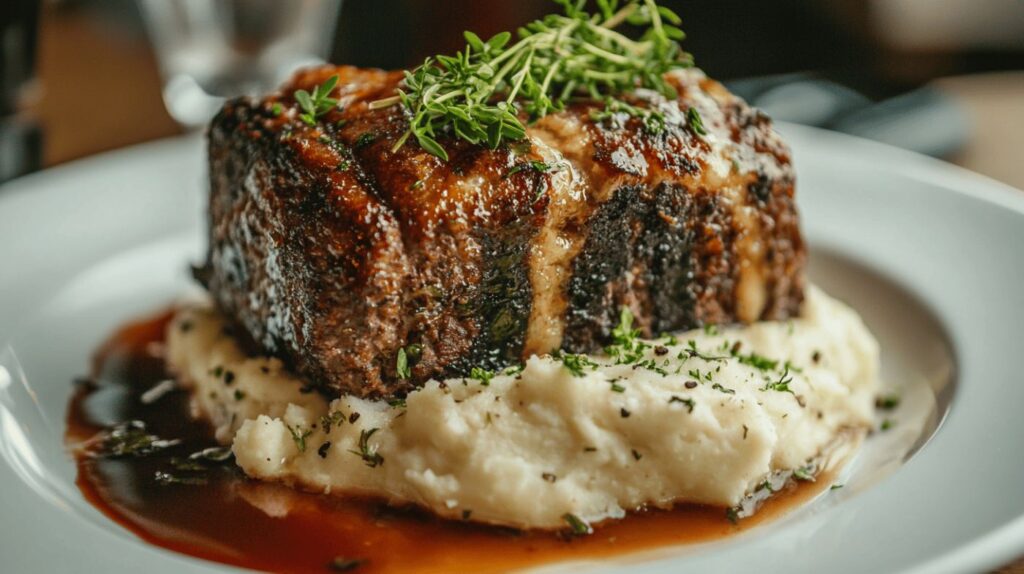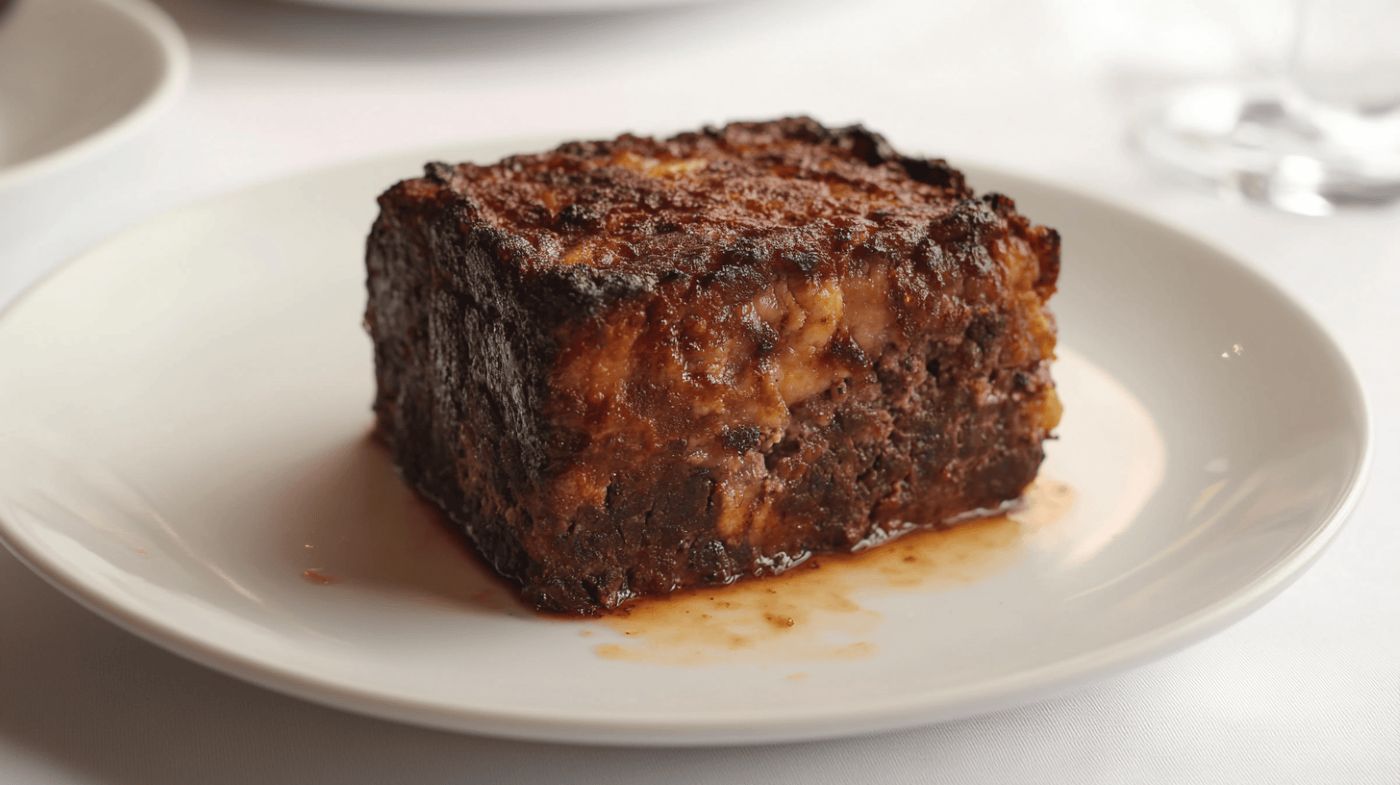Table of Contents
Introduction: The Importance of Choosing the Right Ingredients
Meatloaf is a comforting classic, but getting it just right can be tricky. Every ingredient plays an important role in the final dish. Even small mistakes can turn your meatloaf dry, bland, or crumbly. Choosing the wrong type of meat, adding too much liquid, or skipping a key ingredient can easily ruin it.
How Small Mistakes Can Ruin Meatloaf
The wrong choice of meat can leave your loaf dry and tough. Overpowering seasonings might hide the natural flavors of the dish. Using too many fillers or wet ingredients can cause the loaf to fall apart. Every detail matters. Even mixing the meat too much can ruin its texture, making it dense instead of tender.
Setting the Stage for a Perfect Balance
A great meatloaf starts with balance. You need just the right amount of moisture, seasoning, and structure to create a loaf that holds together and tastes amazing. This guide will walk you through each step, helping you avoid common mistakes. With these tips, you’ll be on your way to creating a meatloaf that’s moist, flavorful, and perfectly cooked every time.
1. Poor Quality or Lean Meat
Why High-Fat Content is Essential
Fat is what keeps meatloaf moist and flavorful. Meat with at least 15–20% fat ensures the loaf stays juicy as it cooks. The fat melts into the meat, creating a tender and rich texture.
Risks of Overly Lean Meat
Using lean meat, such as 90% lean ground beef, often results in a dry and crumbly loaf. No amount of seasoning can fix this issue.
How to Choose the Right Ground Meat
Ground beef with an 80/20 lean-to-fat ratio works well. These blends balance fat content and add depth to the dish. For ideas on achieving the perfect balance of flavor, explore the Perfect Cracker Barrel Meatloaf Recipe: A Complete Guide, which demonstrates how fat content contributes to a moist loaf.
Combining Meats for Better Flavor and Texture
A mix of meats is the secret to an elevated meatloaf. Ground beef provides richness, and veal makes the loaf tender. Aim for equal portions of each for the best result.
2. Overpowering Seasonings
Avoiding Strong Spices
Bold spices like curry or cayenne can overpower your meatloaf. These flavors tend to clash with the savory, comforting taste of the dish. Stick to classic seasonings like salt, pepper, parsley, and paprika.
When Garlic and Onions Overpower the Dish
Raw garlic and onions can be too sharp for meatloaf. To prevent this, sauté them first. This mellows their flavor and ensures they blend seamlessly with the other ingredients.
How to Achieve a Balanced Seasoning Blend
For the best flavor, combine fresh herbs like parsley and thyme with subtle spices like garlic powder. Avoid using too many seasonings, as they can compete with the natural taste of the meat.
Avoiding Artificial Flavor Enhancers
Skip packaged flavoring mixes or seasoning packets. These often contain artificial additives that don’t pair well with fresh ingredients. Instead, rely on simple, high-quality seasonings for a cleaner taste.
3. Excessive Fillers
The Purpose of Fillers in Meatloaf
Fillers like bread crumbs or oats help hold the meatloaf together and give it structure. They also soak up moisture, ensuring the loaf stays tender without becoming soggy.
Choosing Between Bread Crumbs, Oats, and Crackers
Bread crumbs are the most traditional filler, creating a soft texture. Oats are a hearty, gluten-free alternative, while crushed crackers add a bit of crunch. Use 1/2 to 3/4 cup per pound of meat for the right balance.
Why Too Many Fillers Make Meatloaf Fall Apart
Adding too many fillers weakens the structure of your meatloaf, causing it to crumble. Stick to the recommended amount and avoid overloading the mixture.
Vegetables: Which to Avoid and Why
Some vegetables, like zucchini and mushrooms, release too much water when cooked. This can make the meatloaf mushy. Instead, choose low-moisture vegetables like carrots or celery and chop them finely.
4. Overly Moist Ingredients
Risks of Adding Too Much Milk or Broth
Milk or broth helps keep meatloaf moist, but too much can lead to a soggy texture. Use no more than 1/4 cup per pound of meat to maintain the right consistency.
Wet Vegetables Like Zucchini or Mushrooms
These vegetables are packed with water, which releases as the meatloaf cooks. If you want to include them, sauté or drain them thoroughly first to remove excess moisture.
Controlling Moisture Levels for Consistency
A proper meatloaf mixture should be moist but firm enough to hold its shape. If it feels too wet, add more bread crumbs or fillers until it reaches the right texture.
How to Drain and Prepare Ingredients Properly
Always drain canned or frozen vegetables before adding them to your mixture. For fresh vegetables, pat them dry with paper towels after washing. Removing excess moisture makes a big difference.
5. Unusual Additions
Why Seafood Doesn’t Belong in Meatloaf
Fish and shellfish have distinct flavors that don’t pair well with the savory taste of meatloaf. They also cook differently, which can affect the texture and consistency of the dish.
The Problem with Exotic Cheeses
Bold cheeses like blue cheese or goat cheese overpower the meat’s flavor. Stick to mild, complementary options like cheddar or mozzarella.
Avoiding Fruits Like Raisins, Apples, or Pineapple
Sweet fruits can make your meatloaf taste unbalanced. These ingredients work well in other dishes but clash with the savory flavor profile of meatloaf.
Condiments That Clash
Ketchup is the classic meatloaf topping, but using BBQ sauce or other condiments can create conflicting flavors. Stick to simple glazes made with ketchup, mustard, or Worcestershire sauce for consistency.
6. Skipping Binders
Why Eggs Are Necessary for Structure
Eggs are essential for binding the ingredients together. Without them, your meatloaf will fall apart. They also add richness and moisture to the mixture.
Alternative Binders
If you can’t use eggs, try chia seeds or flaxseed mixed with water as a substitute. These options work well for vegan or egg-free diets while still holding the loaf together.
What Happens When You Skip a Binder Entirely
Without a binder, the meatloaf won’t hold its shape and will crumble during cooking. It’s a critical step you can’t afford to skip.
How to Determine the Right Egg-to-Meat Ratio
A good rule is to use one egg for every pound of meat. This ensures enough binding without making the mixture too wet.
7. Poorly Balanced Ingredients

The Role of Sweetness in Meatloaf
A touch of sweetness from ketchup or brown sugar enhances the flavor, but too much can overwhelm the dish. Keep sweetness subtle to maintain balance.
Why Too Much Ketchup or Sugar Ruins the Flavor
Overloading on ketchup or sugar can make your meatloaf taste more like a dessert. Use just enough to add flavor without masking the meat.
Balancing Salt and Umami Flavors
Use Worcestershire sauce, soy sauce, or beef bouillon for a savory boost. Be careful not to add too much salt, as these ingredients already contain plenty.
Avoiding Flavor Imbalance with Toppings or Glazes
Choose toppings that complement the meatloaf’s flavors. For example, a thin layer of ketchup glaze adds tang without overpowering the dish.
8. Overmixing the Meat
Why Overmixing Leads to Tough Meatloaf
Overmixing compacts the meat and makes it dense. This leads to a tough texture that’s less enjoyable to eat.
How to Properly Incorporate Ingredients
Mix the meat gently by hand, stopping as soon as the ingredients are evenly combined. This ensures a tender texture.
Tools to Use When Mixing
Use your hands or a wide spatula to combine the mixture. Avoid using a mixer, as it can overwork the meat.
Tips to Prevent Overworking the Mixture
Start with small amounts of fillers and liquids, adding more as needed. This prevents you from overmixing while adjusting the texture.
9. Toppings That Don’t Work
When Cheese Doesn’t Fit as a Topping
Cheese can overpower the dish and doesn’t always pair well with the meatloaf’s flavor. If you want cheese, mix it into the loaf instead of using it as a topping.
Overpowering Glazes and Sauces
Thick or overly sweet glazes can ruin the balance of the dish. Stick to thin layers of ketchup or a simple glaze for a better result.
Balancing Visual Appeal with Taste
A meatloaf should look appetizing but not distract from the taste. A well-applied glaze adds shine and flavor without going overboard.
How to Choose Complementary Toppings
Pair simple toppings with the loaf’s flavor. A classic ketchup or mustard glaze enhances the taste without competing with it.
10. Improper Cooking Methods
Baking at the Wrong Temperature
Cooking meatloaf at too high a temperature can dry it out, while too low a temperature makes it unevenly cooked. Bake at 350°F (175°C) for the best results.
Overcooking or Undercooking Risks
Overcooked meatloaf becomes dry, while undercooked meat can be unsafe to eat. Always cook until the internal temperature reaches 160°F (71°C).
Why Broiling or Frying Doesn’t Work
Broiling or frying doesn’t cook meatloaf evenly. Baking allows the meat to cook slowly and retain moisture.
Using a Meat Thermometer to Check Doneness
Insert a meat thermometer into the center of the loaf to ensure it’s fully cooked. This eliminates guesswork and guarantees a perfect result.
11. Serving Mistakes
Slicing the Meatloaf Too Early
Cutting into the loaf right away causes it to fall apart. Let it rest for 10–15 minutes to firm up and lock in the juices.
How Resting Time Improves Flavor and Texture
Resting allows the juices to redistribute throughout the meat, making each slice more flavorful and moist.
Common Reheating Mistakes
Avoid microwaving, as it can dry out the loaf. Reheat slices in the oven, covered with foil, to retain moisture.
Pairing Meatloaf with the Wrong Sides
Choose sides that complement the flavors, like mashed potatoes, roasted vegetables, or a simple salad. Avoid overpowering dishes that clash with the meatloaf’s taste.
FAQs About Meatloaf Ingredients
Here are answers to some common questions about making meatloaf. These tips will help you troubleshoot issues and improve your results.
Can I Make Meatloaf Without Eggs?
Yes, you can make meatloaf without eggs by using alternatives like chia seeds, flaxseed, or unsweetened applesauce. Mix one tablespoon of chia or flaxseed with three tablespoons of water to replace one egg. These options work as binders, holding the loaf together. However, eggs add richness and moisture, so your meatloaf might be slightly different in texture.
Should I Use Fresh or Dried Herbs?
Fresh herbs add a bright, natural flavor to your meatloaf. Parsley, thyme, and rosemary are excellent choices. Dried herbs, on the other hand, are more concentrated, so you’ll need less. Use about one-third the amount of dried herbs compared to fresh. If you have both, a mix can balance freshness and intensity.
What’s the Best Way to Add Vegetables?
Chop vegetables finely so they blend well with the meat mixture. Sautéing them first softens their texture and enhances their flavor. This also reduces the water they release during cooking, keeping your meatloaf firm. Stick to low-moisture veggies like carrots, celery, or bell peppers, and avoid overly wet ones like zucchini unless you drain or sauté them thoroughly.
How Can I Fix a Meatloaf Mixture That’s Too Wet?
If your meatloaf mixture feels too wet, add more bread crumbs, crushed crackers, or oatmeal to absorb the excess moisture. Add them a little at a time and mix gently until the consistency is firm but still moist. Avoid overmixing, as this can make the loaf dense.
Can I Use Alternative Proteins Like Turkey?
Yes, ground turkey works well in meatloaf, but it’s leaner than beef. To keep it moist, mix it with a fattier meat or add moisture-rich ingredients like sautéed onions, milk, or a bit of olive oil. Season turkey meatloaf generously, as it can be blander than beef.
How Long Should I Bake a Standard Meatloaf?
Bake a standard meatloaf at 350°F (175°C) for 50–60 minutes per pound. Use a meat thermometer to ensure the internal temperature reaches 160°F (71°C). Let the loaf rest for 10–15 minutes after baking to retain its shape and allow the juices to redistribute.
What Is the Secret to a Great Meatloaf?
The secret lies in balance. Start with high-quality ground meat that has enough fat for moisture. Use just the right amount of fillers and binders to keep the loaf tender and flavorful. Season it well, mix gently to avoid toughness, and bake it at the right temperature for even cooking. A well-chosen glaze or topping can also elevate the dish.
What Does Adding an Extra Egg to Meatloaf Do?
Adding an extra egg increases the loaf’s richness and moisture. It also helps bind the ingredients more firmly, making the meatloaf less likely to fall apart. However, too many eggs can make the mixture too wet, so stick to one egg per pound of meat unless the recipe says otherwise.
What Ingredient Keeps Meatloaf from Falling Apart?
The combination of binders and fillers is what holds meatloaf together. Eggs are the primary binder, while fillers like bread crumbs, oatmeal, or crushed crackers provide structure. Skipping either can cause your loaf to crumble.
Why Milk Instead of Water in Meatloaf
Milk softens the bread crumbs or oatmeal, helping them blend with the meat for a smoother texture. It also adds richness and enhances the overall flavor of the loaf. Water can work in a pinch, but it lacks the creaminess that milk provides. For dairy-free options, try unsweetened almond milk or broth.
These answers should help you troubleshoot common issues and master your meatloaf recipe. With the right techniques and ingredients, you’ll create a dish that everyone will love.
Here are some rich anchor text opportunities to link this article with related content on Cooking Flare:
- Link to Perfect Cracker Barrel Meatloaf Recipe as a reference for balancing traditional meatloaf flavors.
- Mention how certain unique ingredients used in a Luxurious Crab Brûlée might not translate well into meatloaf.
- Highlight the risks of mixing unexpected ingredients, similar to the unique choices in Dubai-Inspired Chocolate Bars.
Conclusion

Perfecting meatloaf is all about choosing the right ingredients and preparing them thoughtfully. By avoiding these common mistakes, you’ll create a moist, flavorful, and balanced dish every time. Experiment cautiously, follow these tips, and enjoy a meatloaf that everyone will love.

